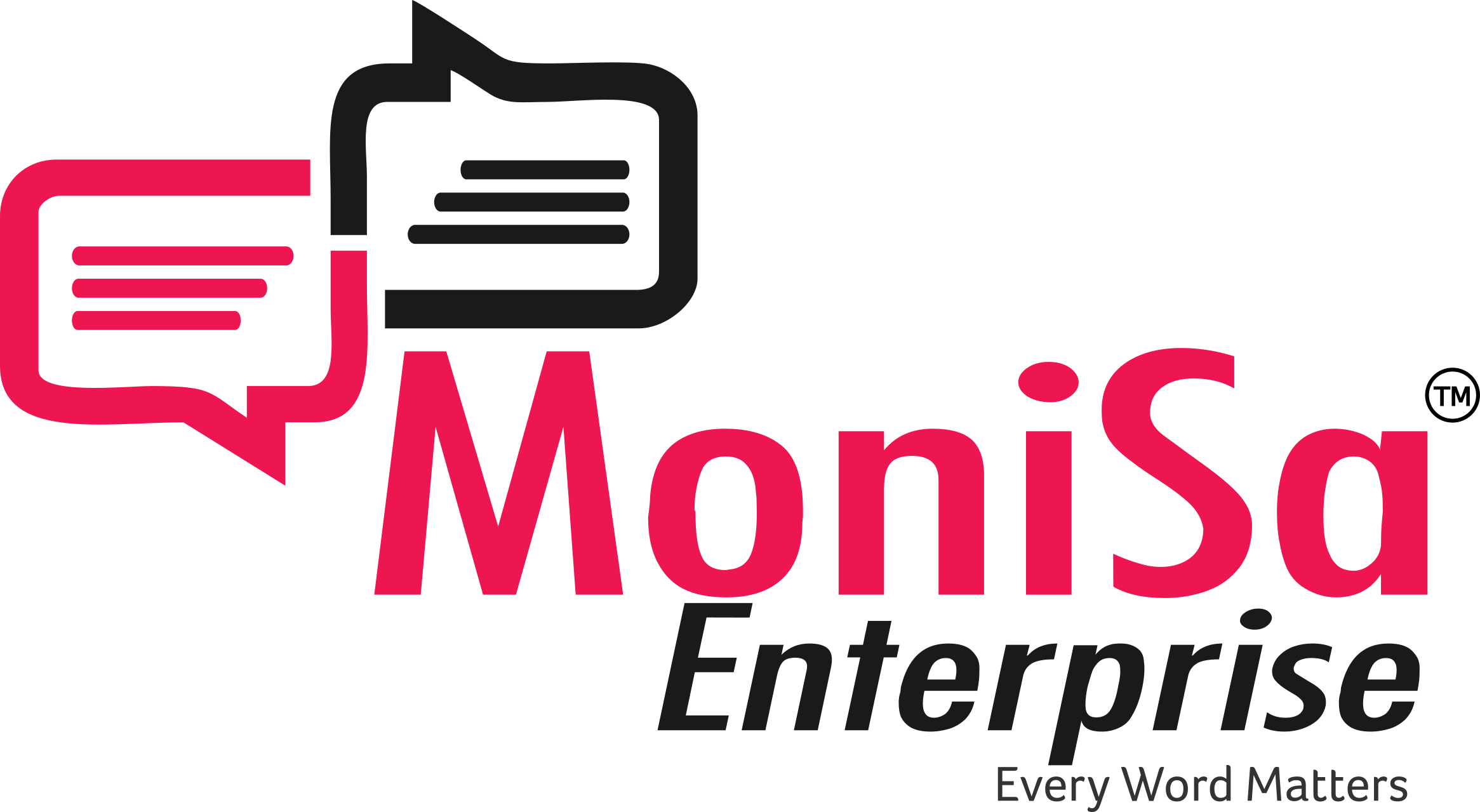Introduction
Table Of Contents
- 1 Introduction
- 2 What Professional Subtitling Services Entail
- 3 Types of Subtitling Services
- 4 The Role of Technology
- 5 1) Automated Tools: Good, but Not Perfect
- 6 Subtitling Services Cost: Breaking Down the Numbers
- 7 Result:
- 8 Solution:
- 9 Actionable Tips for High-Quality Subtitles
- 10 Why MoniSa Enterprise?
- 11 Conclusion
You’ve poured your heart (and budget) into a sleek marketing video. Yet, your overseas audience is tuning out because the subtitles read like a bad knock-knock joke. Sound familiar?
In a world where 85% of Facebook video views happen without sound (Source: Digiday), subtitles are more than just a fancy add-on—they can make or break your international outreach.
But here’s the deal: subtitling is a multi-layered process. You’re not just translating words; you’re capturing your brand’s voice, style, and authenticity.
We’re talking about professional video subtitling services that protect your brand’s reputation and drive real engagement—from the UK to the US and beyond.
What Professional Subtitling Services Entail
Did you know that 85% of Facebook video views happen without sound? If your subtitles aren’t spot-on, you could be losing 8 out of 10 potential viewers. Let’s fix that.
Professional subtitling is more than just converting spoken words into text. It’s about:
1) Accuracy: Capturing the correct words, tone, and intent.
2) Timing: Syncing subtitles to appear precisely when they’re spoken.
3) Localization: Adapting slang, idioms, and cultural references. Think “mate” in the UK vs. “buddy” in the US.
4) Quality Control: Double-checking for grammatical errors and unnatural phrasing (we’re looking at you, autocorrect).
If you’re handling corporate training, marketing campaigns, or any official communication, getting these elements wrong isn’t just embarrassing—it can cost you deals and credibility.
Types of Subtitling Services
1) Closed Captions (CC): Primarily for the hearing impaired; includes non-speech elements like [music plays softly] or [applause].
2) Open Subtitles: Always visible on screen—great for platforms that don’t support toggling subtitles on/off.
3) Live Subtitling: Real-time transcription for events or webinars—super helpful when streaming conferences in multiple countries.
4) Multilingual Subtitling: Ideal if you want a single video to speak Spanish, French, Chinese, or any other language your audience demands.
The Role of Technology
1) Automated Tools: Good, but Not Perfect
Sure, automated speech recognition (ASR) tools like YouTube’s auto-captions are quick. But have you ever read those subtitles?
Sometimes they’re hilariously off-base. For casual content, that might fly. For your brand’s corporate message? Not a chance.
2) Human Expertise: Where the Magic Happens
MoniSa Enterprise blends AI-driven transcription with actual human linguists who refine and localize the text. Think of AI as your sous-chef chopping veggies and human subtitlers as the head chef seasoning the dish to perfection. The synergy means faster turnarounds—without sacrificing quality.
Subtitling Services Cost: Breaking Down the Numbers
“Alright, so how much is this going to set me back?” Glad you asked.
Costs depend on:
1) Language Pair: English to Spanish might be more straightforward (and affordable) than English to Japanese or Arabic.
2) Video Duration & Complexity: A fast-paced commercial is more complex than a slow-paced interview.
3) Turnaround Time: Need it by yesterday? Rush jobs cost extra—naturally.
A typical 5-minute corporate video can run around $150–$300 for professional subtitling with top-tier localization. You might find cheaper options, but cut-rate often means cutting corners—and you could end up paying more later to fix errors or salvage your brand’s reputation.
Avoiding the “Lost-in-Translation” Pitfall
Scenario: A US-based tech startup rolled out a product demo video in five languages—Spanish, French, German, Japanese, and Brazilian Portuguese. To save time, they used free auto-translation software.
Result:
Confusion among Spanish-speaking employees due to mistranslated technical terms.
Hilarious—but brand-damaging—phrasing in Japanese. (Ever seen “cloud computing” rendered as a “sky arrangement system”?)
Solution:
They switched to MoniSa Enterprise, which used a combination of specialized translation tools and human experts. Within two weeks, they had polished, on-point subtitles. A 2023 Nielsen report shows that accurate subtitles can boost viewer retention by up to 35%.
In this case? Engagement rose by 40%—clear proof of the power of professional subtitling.
Actionable Tips for High-Quality Subtitles
1) Keep It Short & Snappy: Stick to 42 characters per line max. Viewers won’t read an essay on-screen.
2) Time It Right: Subtitles should appear for 1–6 seconds depending on reading speed. Too fast? Viewers miss it. Too slow? It lingers awkwardly.
3) Avoid Visual Overload: Keep text legible but unobtrusive.
4) Localize Slang & Jargon: Use local equivalents for terms like “buddy” or “check it out.”
5) Quality Assurance: Always have a native speaker or pro QA team review your final subtitles.
Why MoniSa Enterprise?
MoniSa Enterprise isn’t just another translation agency. Here’s what sets them apart:
1) Speed + Accuracy: AI for first drafts, humans for fine-tuning.
2) Subject-Matter Experts: From medical to legal, their specialists speak your industry’s language—literally.
3) Global Reach: Operating across the UK, US, and beyond, they help your message hit home in London, New York, Tokyo, and more.
4) Case-Proven Results: Clients report up to 30% faster localization times, while maintaining a 99% quality assurance rating.
Conclusion
Pick any one of your existing videos—maybe your latest product demo or your corporate “About Us” reel. Get it professionally subtitled by MoniSa Enterprise and watch how your audience reacts. Spoiler alert: they’ll thank you for it.
Still on the fence?
Worried about cost? Think of the ROI—better engagement, stronger brand presence, and a more inclusive viewer experience.
Not sure which languages to prioritize? That’s where an expert consultation comes in.
Here’s the real question: Can you afford to ignore the viewers who don’t speak your primary language?
P.S. Next time you watch a video in a language you don’t understand, pay attention to how the subtitles flow. If they feel natural, that’s your gold standard. We can help you reach it.Because in today’s global market, if your message isn’t loud and clear in every language, you’re leaving money and audience love on the table.


